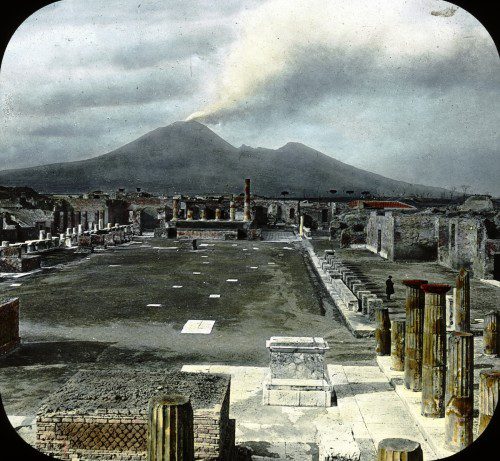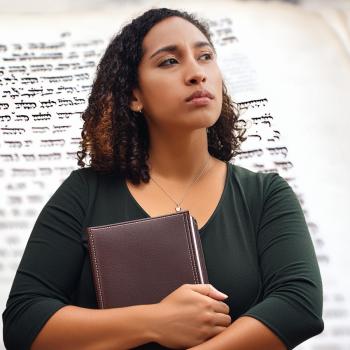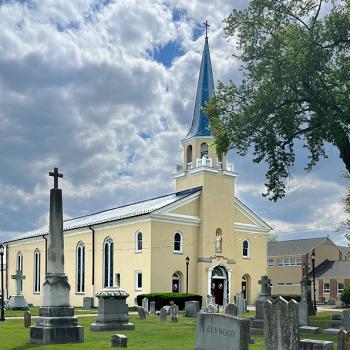
Dear Thoughtful Pastor: When you were in Europe recently, did you learn anything while seeing historic Christianity that would give you insight as to how it affects your understanding of the way Christianity is practiced in the US today?
After spending several weeks in a land where a town only four hundred years old is considered without historical interest, I began to recognize better our shallow roots. I gained understanding that our ignorance of both religious and secular history means that we have pretty inflated ideas of ourselves and our accomplishments.
I also found greater awareness of the transient nature of life, civilization and religious structures. Nothing lasts forever; everything changes. We look in vain for permanence in belief, doctrine or the understanding of the nature of God.
Pompeii spoke loudly. As our guide indicated, that city had everything modern cities do: well-laid out streets, good traffic restrictions, public gathering areas, easy-to-access shops, brisk local and international trade, sophisticated politics, good messaging systems, effective plumbing, and a variety of housing.
All we moderns have managed to do to “improve” on this is hasten the pace of our lives by inventing the polluting internal combustion engine and the addiction of electronic devices and instant everything.
In a short period of time, Pompeii was buried by a volcanic eruption. Every person and animal in the town suffocated; every building buried under over ten feet of rapidly falling ash. The civilization disappeared in a few hours, only to be discovered hundreds of years later.
Nothing built by human hands, no matter how sophisticated, is permanent.
While in Rome we walked into countless churches. We admired the Michelangelo-adorned Sistine Chapel and the ginormous St. Peter’s Basilica. In the oldest parts of Rome, there appeared to be a church or two of some sort on every block. Each one had some special reason for existing–a devotion to a saint, or a commission from a Pope, or the home of some sacred relics. A few had spare furnishings and architecture but most displayed unbelievably lavish construction and ornamentation.

Tourists wandered in and out. A few people came to pray.
The Sancta Sanctorum, or the “Holy of Holies”particularly intrigued me. It used to be a private chapel for early Popes who lived in the nearby Lateran Palace.
According to tradition, the Sancta Sanctorum is built on soil brought from Mount Calvary, where Jesus was crucified. It also houses the stairs from the Jerusalem palace of Pontius Pilate.
Saint Helena, mother of the Emperor Constantine, had the stone steps brought to Rome in the 4th century. Daily, pilgrims on their knees slowly make their way up the twenty-eight hard and unforgiving steps (covered by wood to keep human defilement away), saying a prayer on each step.
Constantine, later converting to Christianity, ended up making the Christian faith the official faith of the Roman Empire. By that act, he formalized the unholy marriage of Christianity and politics.
Before that formal institutionalism, Jesus followers were far more likely to be the poor and oppressed. With limited access to written materials, they spent their time, not in Bible study, but in offering support to one another in their dangerous worlds. Persecution lurked at every corner. They learned that the liberating hope of the Gospel of forgiveness and reconciliation with God did indeed set them free, even when surrounded by oppression and danger.
With Constantine, Christianity became the religion of the oppressors. The religious leaders became rich, politically powerful and possibly forever compromised morally and ethically.
As one politically astute guide told us, Italy, this religious and well-churched country, is indelibly riddled by personal and political corruption.
Look at the parallels. Instead of giant basilicas paying homage to a Pope (by the way, a “basilica” refers to the style of architecture: a long building with three aisles), we have prime-acre-gobbling mega-churches paying homage to the celebrity pastor.
The Popes commissioned artists to memorialize their lives in multiple sculptures and paintings. We see them clothed in expensive vestments signifying their authority. The celebrity church pastors enlarge their numbers of “followers” by legions of ghost-authored books and curated tweets. Strategic links to high-energy videos of trendily-dressed “men of God” blast non-stop to the ever-adoring public.
So what did I learn? That nothing really changes; that the religious world, no matter what the century, cheapens itself by insisting that the will of the holy and utterly good God depends upon the political leadership and choices of any nation or peoples.
I also learned that people today, just as they did yesterday, want a real, authentic experience of the Holy God and will go to great lengths to find it.
As Augustine wrote in his famous Confessions, “You have made us for yourself, and our hearts are restless till they find their rest in you.”
May we all find our rest.
 [Note: a version of this column is scheduled to run in the Nov 4, 2016, edition of the Denton Record-Chronicle. The Thoughtful Pastor, AKA Christy Thomas, welcomes all questions for the column. Although the questioner will not be identified, I do need a name and verifiable contact information in case the newspaper editor has need of it. You may use this link to email questions.
[Note: a version of this column is scheduled to run in the Nov 4, 2016, edition of the Denton Record-Chronicle. The Thoughtful Pastor, AKA Christy Thomas, welcomes all questions for the column. Although the questioner will not be identified, I do need a name and verifiable contact information in case the newspaper editor has need of it. You may use this link to email questions.













